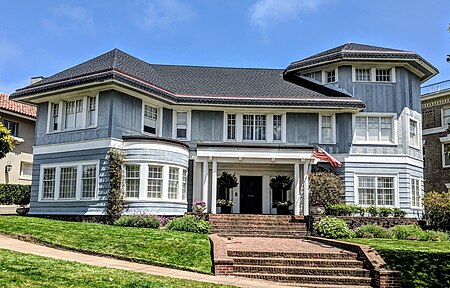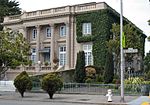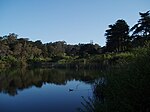Presidio Terrace
Neighborhoods in San Francisco

Presidio Terrace is a small, extremely affluent neighborhood in San Francisco that was the first of the master-planned communities built in the western part of the city. It consists of 36 large lots laid out around a single privately owned street, also called Presidio Terrace, which takes the form of a two-way access street leading to a one-way elliptical cul-de-sac. Access is off Arguello Boulevard.
Excerpt from the Wikipedia article Presidio Terrace (License: CC BY-SA 3.0, Authors, Images).Presidio Terrace
Presidio Terrace, San Francisco
Geographical coordinates (GPS) Address Nearby Places Show on map
Geographical coordinates (GPS)
| Latitude | Longitude |
|---|---|
| N 37.788333333333 ° | E -122.46055555556 ° |
Address
Presidio Terrace 31
94129 San Francisco
California, United States
Open on Google Maps







